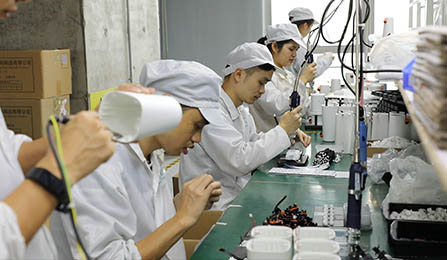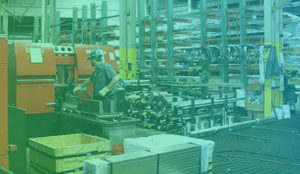Introduction
You’re looking to develop hardware, but lack the understanding of how to do it. Well, fear not, we have created this guide to give you an overview of the process of developing hardware. It’s no secret, but developing hardware is difficult, or at least the process makes it difficult, as there are numerous areas that need to be considered throughout the hardware development cycle.
Many startups entering the hardware space are misinformed before they begin to develop hardware. There is this misconception that when developing hardware all you need to do is compile a few components and assemble them into a so-called ‘functioning prototype’ and then transition this to the manufacturing lines. Sorry to say but, this is not the case. In fact, hardware development requires a huge amount of investment, both financially and duration.
The majority of hardware startups never even get to market, this is because many of them neglect the fundamental rules when they develop hardware. Hardware has been famously described as ‘hard’ (i.e hardware is hard) but it doesn’t necessarily need to be. All you need to successfully develop hardware is the right team, the right infrastructure, and the right partners.
What are innovative startups doing to successfully develop hardware?
Let’s start with the basics of hardware development. Successful hardware startups focus a lot of attention to the design of the product. Hardware development, in some ways, is an art form in itself. You cannot just put two and two together and expect a market-ready product, this never happens! You need a thoughtfully thought out design of your product in order for it to transition smoothly through the product development life-cycle.
How do you ensure the right design when developing hardware?
So, there are a few ways in which you can ensure you make the right design while developing hardware. Let me explain the most common way founders ensure the right design when developing hardware.
Founders who have an engineering background will do it themselves.
Now, this is very common among founders who ‘think’ they know how to ensure the right design when developing hardware, but we have seen numerous products coming from founders such as this filled with design bugs and quality problems. In some cases the design is okay, but unless you’ve attended 5 years at MIT we’d suggest another option.
Outsourcing the hardware design/development to freelancers.
Now you may be on a tight budget but an option to greatly increase the quality of your hardware development is to outsource part of the workload to freelancers. The downside to this is that hardware development required numerous engineers in different fields of engineering to ensure the best design and development of a hardware device. So, you’d need to think about what YOU can do in-house compared to what area of the hardware development you should outsource.
Founders who hire the right in-house hardware development team.
Another option that successful hardware startups take is hiring a strong team of hardware designers, preferably engineers who have a few years of experience beneath their belt, at least engineers who have developed hardware before. This has proven to be an effective option that many successful startups take, as they onboard an experienced engineer as their CTO to help them successfully develop hardware.
Outsource the entire hardware development to a 3rd party engineering company.
If you’re not so strapped for cash, hardware startups often outsource the hardware development process to a 3rd party engineering firm. This is proven to be the most effective way of developing hardware and successfully deploying it to the market. As the partnering company would (ensure you do a thorough due diligence when searching for an engineering company) have many years of experience with a very mature engineering team to ensure quality, speed, and reliability.
Developing the hardware
Developing the hardware can is usually broken down in several steps. As a founder developing hardware you need to consider the product design, schematic diagrams, PCB layout, bill of materials (BOM), prototype, testing, and finally certification.
This is the standard process that you need to consider when developing hardware. Don’t worry we will go through them one by one and give you an overview of each aspect of the development process.
Product design
The product design is the focus of your product’s production components, the general cost, performance, and key features of your future product. Many hardware founders neglect this step and jump straight into designing and developing the other areas of the product. However, this can prove to be detrimental when developing hardware as your product design is the initial benchmark of the overall product.
Schematic diagrams
The schematic diagram is a representation of the system using abstract, graphic symbols rather than realistic pictures. This is the general view of the product’s functionality through its cables and connections.
PCB Layout
The PCB layout is a more visualized image of the schematic but in more detail.
Bill of materials
Your bill of materials is a list of all the materials that will be used in your final product’s assembly, along with a list of prices. When developing your hardware product it is crucial to pay close attention to your BOM, as just a single dollar can be the difference between a successful or unsuccessful company.
Prototype
Now it is finally time to start the development of your prototype. A prototype is only a looks-like works-like concept of your finished product. Your prototyping stage is only designed to validate the core functionality of your product.
Testing
Throughout your hardware development process you will need to put your hardware device through numerous durability and reliability tests to ensure that it can work under different environments and are aligned with the proper certification needed to be sold within your desired market.
Certification
Certification goes without saying but is often an afterthought during hardware development. Mainly because getting your hardware device to function properly is usually the main focus. However, founders can be easily tricked into doing a redesign if you’ve overlooked the safety requirements needed to pass certification in the initial design stage.
Conclusion of hardware development
Hardware development is a long process that requires a lot of attention to detail, especially during the design phase of your development. If you have not fulfilled the key aspects of your product’s design at the early stage you will suffer for it later on throughout the hardware development process.
Many startups will constantly neglect the importance of the early stages of hardware development, which leads to an unsuccessful deployment of their hardware product. Keep in mind that developing hardware is not a solo venture, and will require a huge amount of resources and knowledge in order to successfully get your product to the market.





